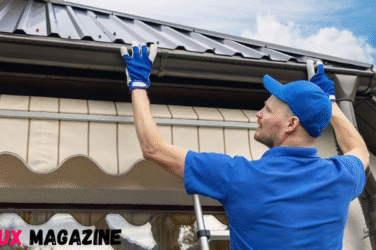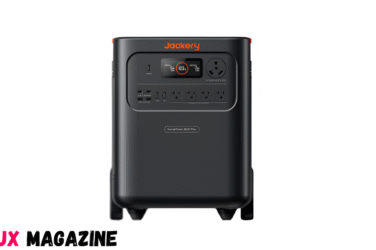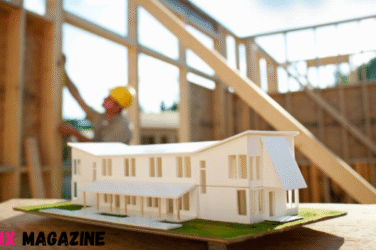As autumn approaches, the days grow shorter, temperatures begin to drop, and rainfall becomes more frequent. While this season has its charm, it also brings the perfect conditions for damp problems to develop in your home. Cold weather and moisture create an ideal environment for condensation, mould growth, and structural damp. Left untreated, damp not only damages your property but can also harm your health. Preparing your home in advance is the best way to stay warm, dry, and comfortable throughout the colder months. Damp-proofing in autumn is essential because prevention is far easier and more cost-effective than repairs later in the year. With a few practical steps and some expert support, you can protect your home and avoid expensive damage.
Understanding the Causes of Damp
Damp can appear in different forms, each caused by different factors. Condensation is the most common, resulting from warm air meeting cold surfaces, leading to water droplets forming on windows, walls, and ceilings. Rising damp is caused by moisture travelling up through brickwork due to a failed or missing damp-proof course, while penetrating damp occurs when rainwater enters through damaged roofing, guttering, or walls.
Knowing what type of damp you are dealing with helps you choose the right damp-proofing solution. If you are unsure, a professional damp survey can help pinpoint the cause and recommend effective treatments.
Inspect Your Roof and Guttering
Autumn weather often includes heavy rain, which can quickly cause water damage if your roof or guttering is not in good condition. Broken or missing roof tiles, cracked flashing, or blocked gutters can allow water to seep into your home. This leads to leaks, damp patches, and in some cases, structural damage.
It’s a good idea to clear out your gutters and downpipes before autumn rain sets in, removing leaves and debris that could cause blockages. While you’re at it, check your roof for damage and have any issues repaired before winter weather makes them worse.
Improve Ventilation In Your Home
Many damp issues are caused or worsened by poor ventilation. In colder months, people often keep windows closed, which traps moisture inside. Everyday activities like cooking, showering, and drying clothes indoors add to this problem, creating condensation that encourages mould growth.
Installing extractor fans in kitchens and bathrooms, using trickle vents on windows, and regularly airing out your home can significantly reduce moisture levels. Dehumidifiers are also a practical solution for rooms that struggle with damp. Reducing moisture build-up and keeping ventilation moving in your home is key to both moisture control (damp prevention) and energy efficiency.
Check for Cracks and Gaps
Small cracks in exterior walls, around windows, or near doors can let in rainwater and cold air, increasing the risk of damp and reducing your home’s energy efficiency. Sealing gaps with weatherproof sealant or repairing damaged pointing can help stop water ingress and heat loss.
Pay attention to areas where pipes or cables enter your home, as these are often overlooked but can be a source of draughts and damp. A thorough inspection in autumn can prevent major problems in winter.
Protect Against Rising Damp
If your property has a damaged or missing damp-proof course, rising damp can become a serious issue. This type of damp leaves tide marks on walls, crumbling plaster, and a musty smell. Treating rising damp early is essential to prevent long-term structural damage.
Professional damp-proofing treatments, such as chemical damp-proof courses or waterproof membranes, are often necessary for severe cases. It’s worth booking a damp survey if you notice signs of rising damp, as quick action can save you both money and stress.
Insulate to Keep Heat In and Moisture Out
Proper insulation not only keeps your home warm but also helps control condensation. Cold surfaces encourage moisture to settle, so insulating walls, floors, and loft spaces reduces the risk of damp. Double glazing also helps maintain a more consistent indoor temperature, preventing condensation build-up on windows.
When insulating, ensure you also address ventilation. Insulation and ventilation work together to create a healthy, energy-efficient home. The Royal Institute of British Architects recommends upgrading insulation as part of a whole-home energy strategy, which often improves damp resistance too.
Maintain Your Heating System
Your central heating plays an important role in damp prevention. If your home is unevenly heated, colder areas are more prone to condensation and mould. It’s worth scheduling a boiler service before winter to make sure your heating is working efficiently.
Using your heating consistently, even at a lower temperature, helps keep moisture under control and prevents cold spots from forming. Pairing this with a smart thermostat can save energy while keeping your home warm and dry.
Keep Furniture Away from Cold Walls
Another simple way to reduce damp risk is to ensure there’s enough airflow around furniture. Placing large wardrobes, beds, or sofas directly against cold external walls traps moisture, creating ideal conditions for mould growth.
Try to leave a small gap between furniture and walls to allow air circulation, particularly in bedrooms where condensation from breathing can increase moisture levels overnight.
Signs You Need Professional Damp-Proofing
If you see black mould, peeling wallpaper, or a persistent musty smell, it may be time to call a damp-proofing specialist. Early intervention is key, as damp damage becomes more expensive to fix the longer it is left untreated.
Professional surveys can identify whether your problem is condensation, rising damp, or penetrating damp, and recommend treatments tailored to your property. Damp proofing experts such as London Damp Solutions have access to specialist products and equipment that provide long-lasting protection.
Final Thoughts
Autumn is the perfect time to prepare your home for cold and wet weather. Simple maintenance tasks like cleaning gutters, improving ventilation, and sealing cracks can prevent common damp problems. Insulating your property and maintaining your heating system will also make your home more comfortable and energy-efficient. If you suspect a damp problem, professional support is the safest way to protect your home. A damp-proofing specialist can diagnose issues early and recommend the most effective solutions, helping you avoid costly repairs in the future. By taking proactive steps now, you can enjoy a warm, dry, and healthy home throughout autumn and winter.


















Show Comments (0)